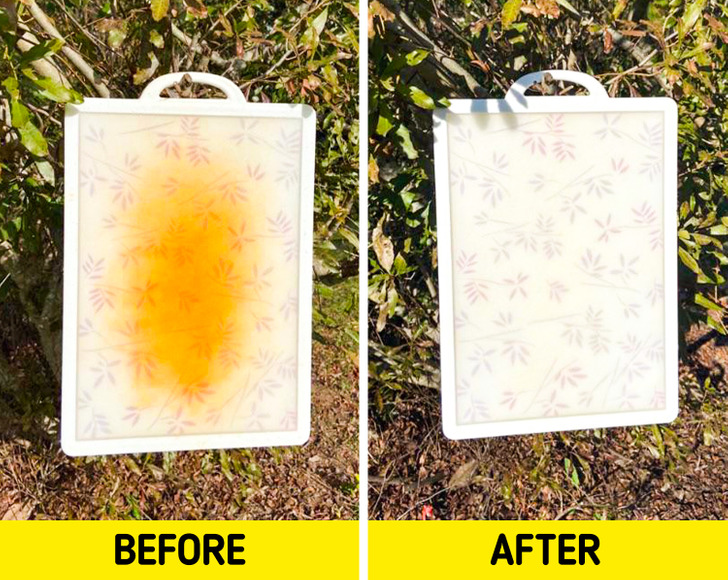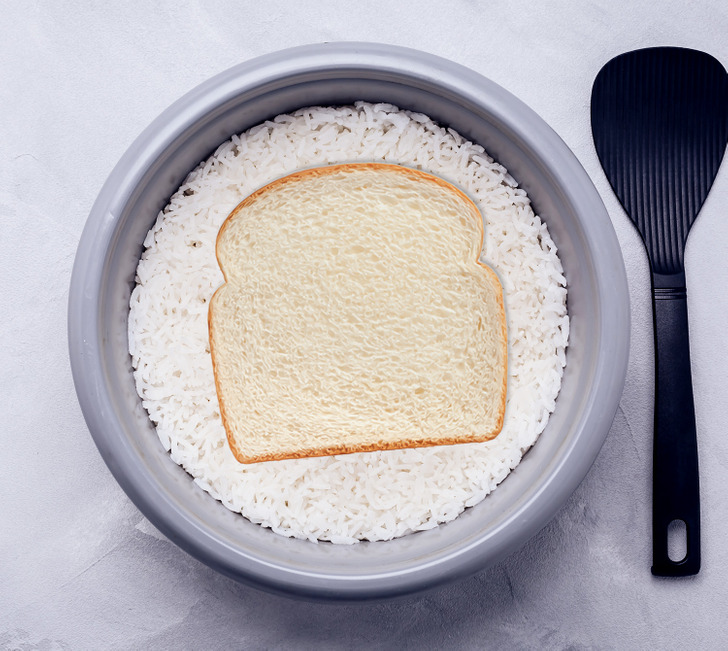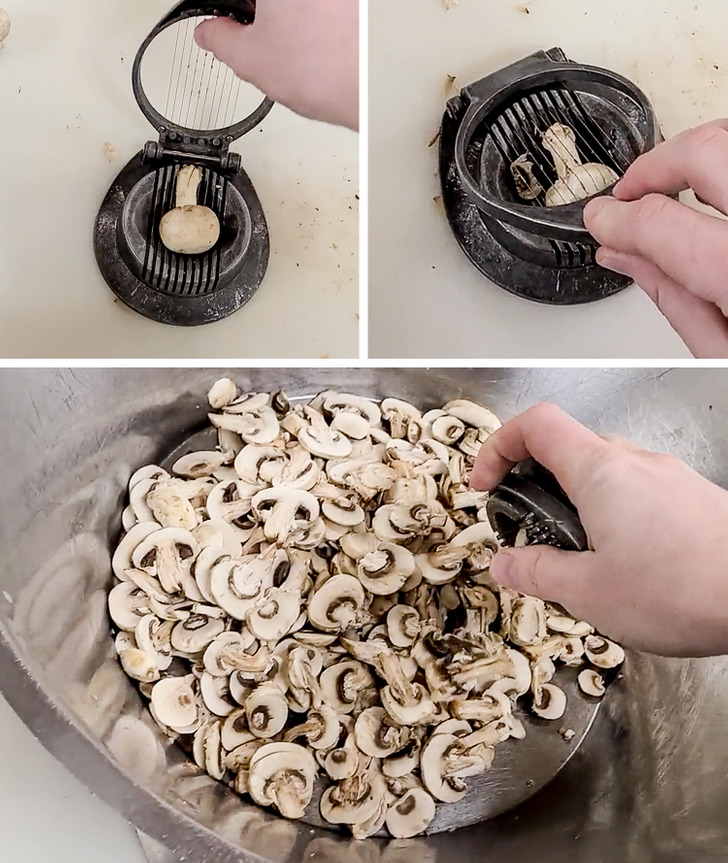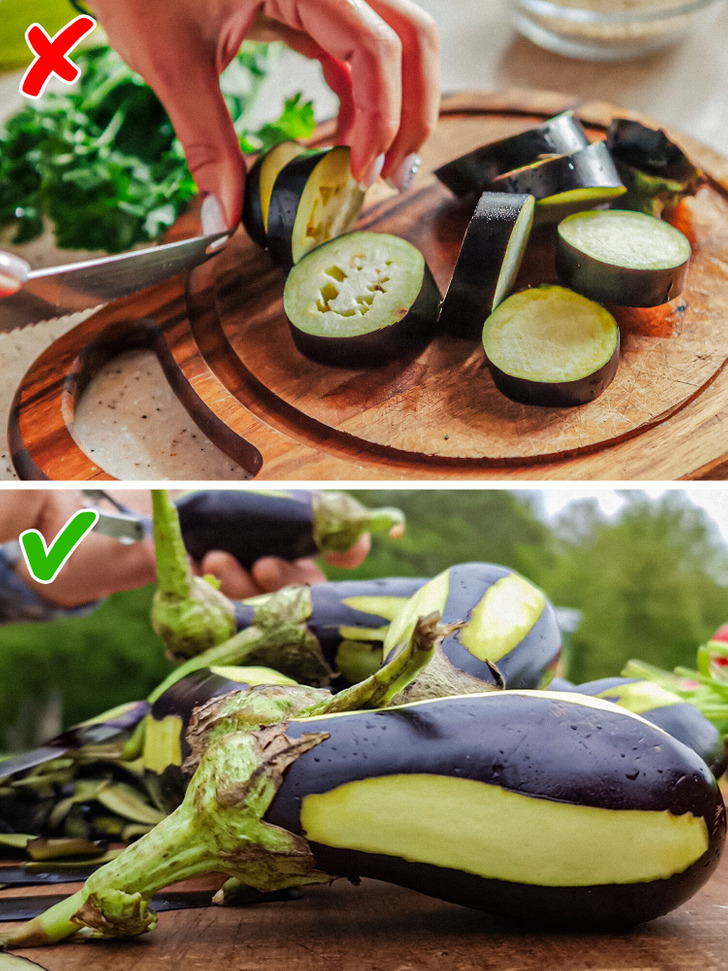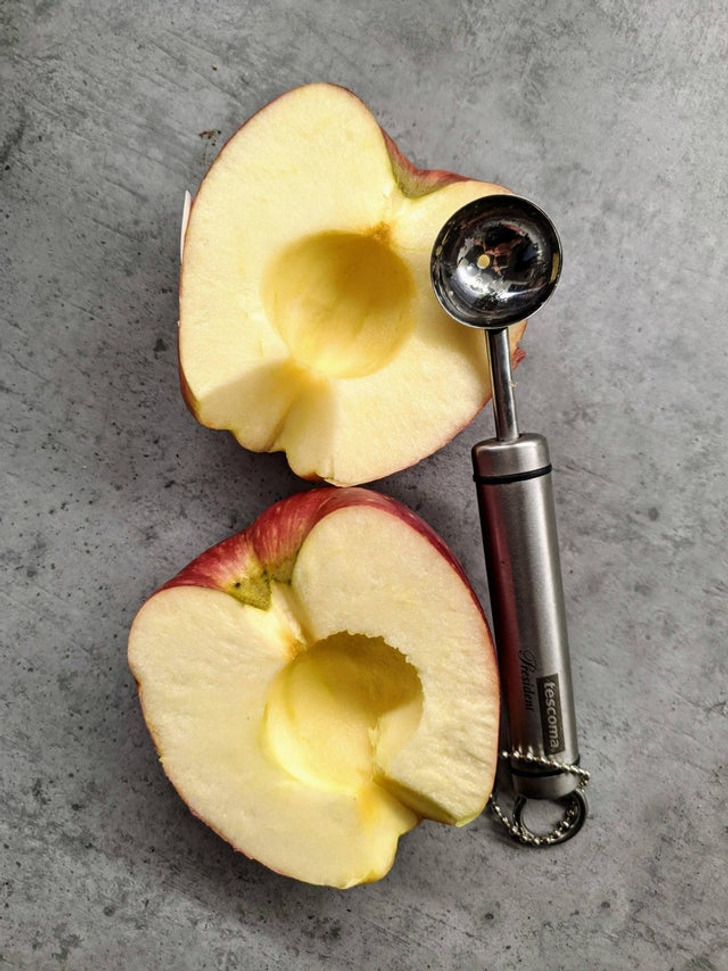20+ Smart Kitchen Tips You’ll Want to Write Down So You’ll Never Forget
Beginner chefs and those who already know how to cook delicious food will never hesitate to learn a few new tricks that will help them save time and even money while reducing waste. People come up with such life hacks almost every day, or they remember forgotten tips and share what they’ve learned from books and programs.
Peel and devein shrimp with a fork
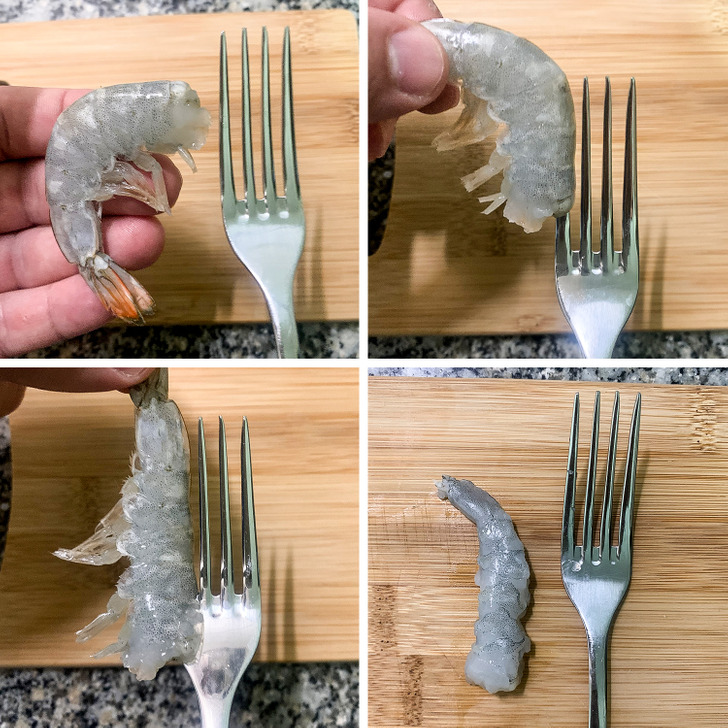
Peeling shrimp can be a tedious and messy task. But, as it turns out, a fork can help us take out the shell and de-vein at the same time. As instructed in this tutorial video, after taking out the shrimp’s head, stick one of the fork’s prongs into the veiny part, run it through the shell, and pull it apart. Easy-peasy!
Don’t neglect salt in yeast bread.
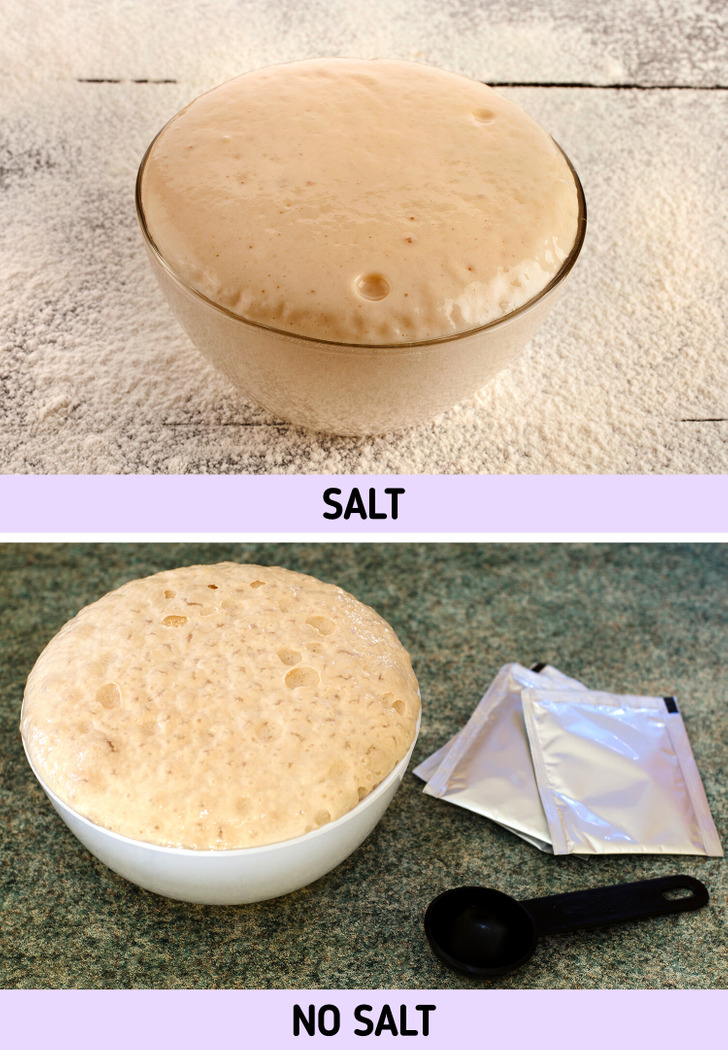
The guarantee for a good pastry is high-quality yeast. As it turns out, you can control yeast with salt. So, if you need the dough to rise faster, don’t salt it. But if you leave the dough with no salt at all, the bread will lose all of its volume.
Remove food stains with the help of sunlight or other ingredients.
Save some time scrubbing the stubborn stains out of cutting boards by leaving them outside and letting nature do the work for you. Just place the board in a spot where it gets hit by direct sunlight. The ultraviolet rays from the sun will break down the stain’s molecules and chemical bonds until they basically disintegrate.
In case you don’t have access to direct sunlight, these viral TikTok hacks are worth a try. Stains on wooden cutting boards can be removed by sprinkling salt on them before scrubbing the surface with a lemon. For plastic ones, a mixture of baking soda and vinegar, plus the good old lemon scrub, will do the trick.
Save burnt rice with a slice of white bread
We’re all bound to encounter burnt rice at some point in our lives (don’t worry, it happens to the best of us). And even if it’s just the bottom part that’s overcooked or toasted, it can affect the taste of the perfectly cooked rice around it.
Instead of throwing the whole thing away and whipping up a new batch, you can still rescue this one by putting a slice of white bread on top and leaving it for 5-10 minutes. The bread will absorb the burnt flavor and aroma, so you’ll still be able to serve the rest of the rice. Just be careful not to scoop the toasted part at the bottom.
Separate leaves and stems easily with the help of a strainer
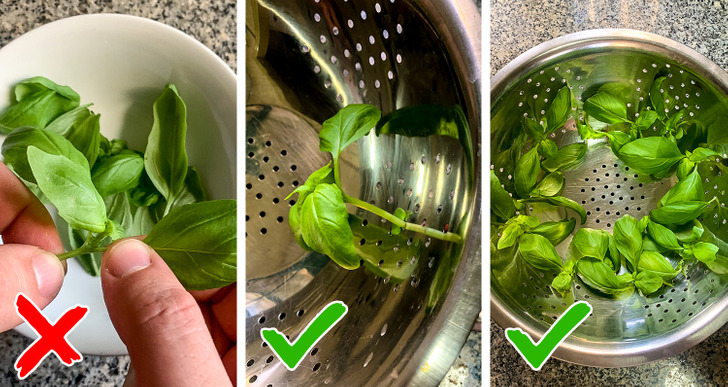
There’s an easier way for us to get all the leaves without having to individually pluck them from the stems. All we need is a strainer or pasta spoons with measuring holes in the middle. Just put the stem through one of the holes, carefully pull it from the other side, and voilà! The strainer will even catch the leaves for you.
Soak beans in baking soda and don’t add salt to it before it’s cooked.
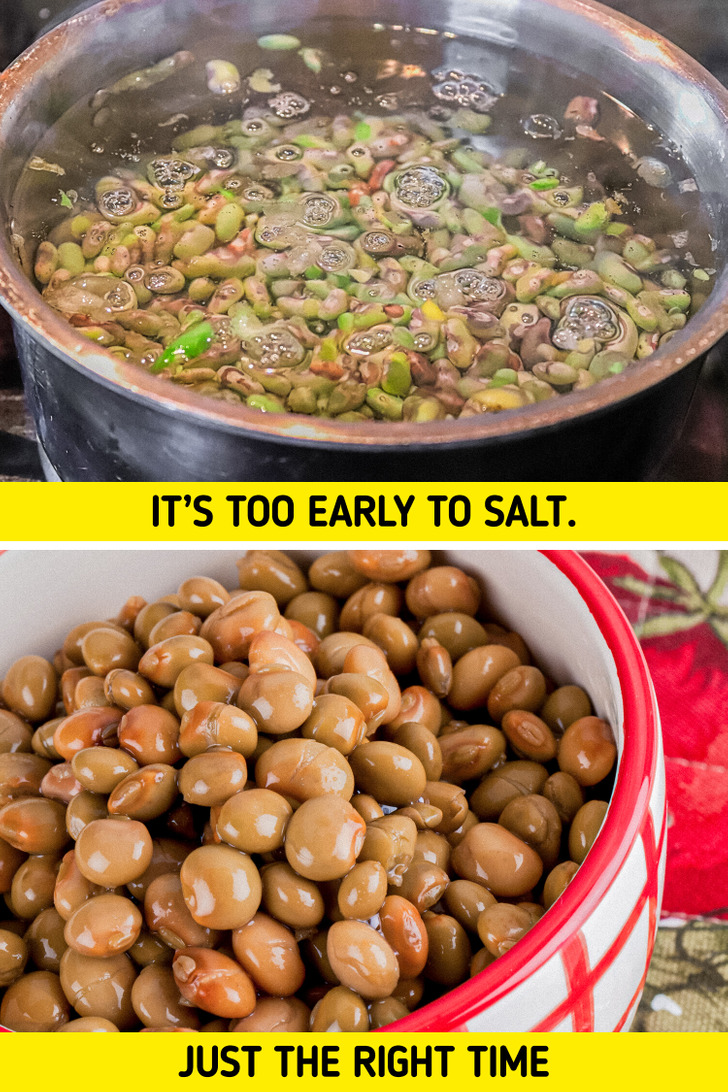
Legumes are a popular ingredient in Middle Eastern cuisine, and fava bean stew is a typical breakfast in Egypt, Lebanon, Syria, Jordan, and other countries of the Middle East. It’s no wonder that people there know various tricks to cook beans. For example, they recommend soaking them in water mixed with baking soda but rinsing the beans afterward. If you add baking soda during cooking, the beans will also cook faster, but you may end up with foam and a soapy taste.
Cut mushrooms faster by using an egg slicer
This tool will help you achieve even slices for a more impressive presentation. After washing your mushrooms and trimming the bottoms of the stems, put a piece on the slicer and position it depending on how you want it cut — vertically or horizontally. Then press the slicer down, just like how you would with an egg. This method is also efficient for cutting other foods, like olives, cheese, kiwis, strawberries, and carrots.
Peel eggplants in a special way.
Usually, young eggplants are not peeled before cooking, but larger or older eggplants should be peeled because their skin becomes bitter. But if you leave no skin on the vegetable, it will turn to mush. This is why some Middle Eastern recipes recommend peeling an eggplant in “zebra stripes.” After that, it can be cut into circles, cubes, or stuffed.
Remove seeds with an ice cream scooper
So here’s the “scoop” — you can actually use an ice cream scooper to core an apple (as pictured above). This tool is also your best bet for removing seeds from a squash or pumpkin. Since its edge is sharper than the usual spoon, it cuts better through the gooey stuff, and its deeper curve will catch more seeds as well.
Fry rice before cooking it.
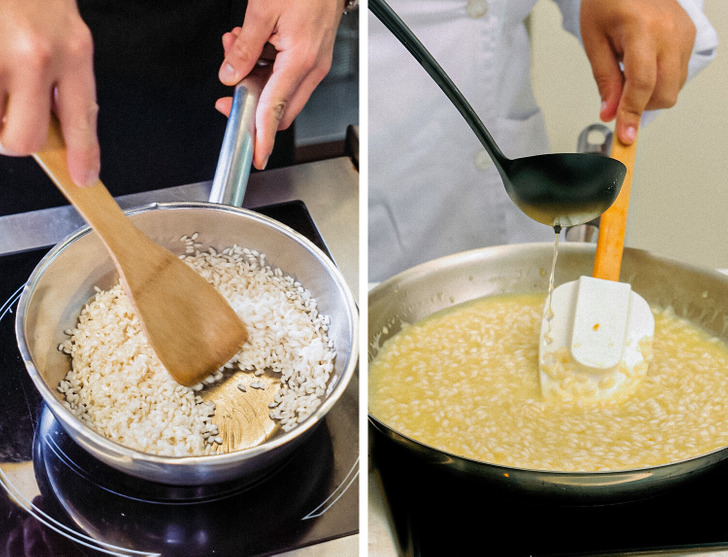
There is a stage of cooking that can make rice more crumbly and saturate it with additional tastes, but we tend to skip it. This stage is frying it in oil before adding water to it.
This step is quite simple. All you need to do is heat oil in the frying pan on medium heat, then add the rice and fry it until a visible change of color presents itself. After this, add water, wait until it boils, cover it with a lid, and leave on low heat for about 20 minutes.
Scrape the upper layer of meat that has been stored in the fridge for a long time.
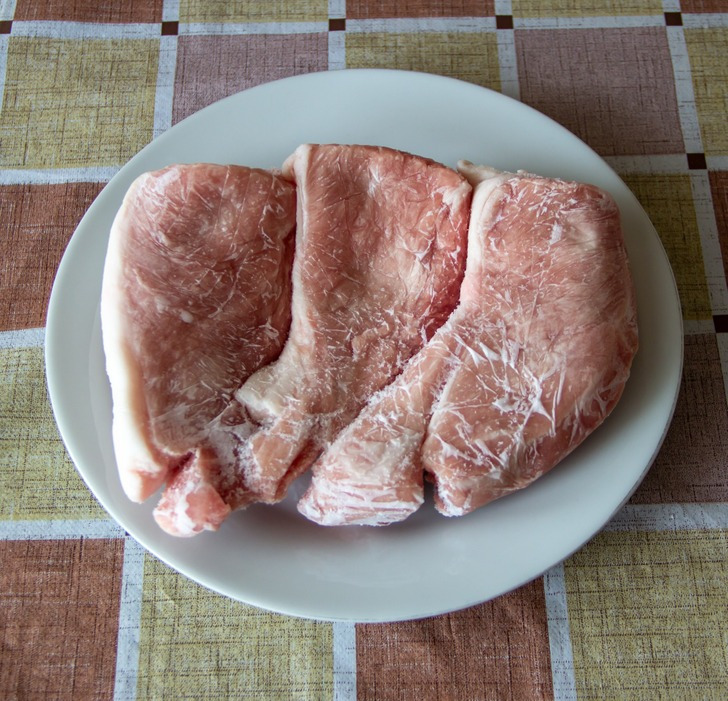
The upper layer of meat that had been stored in the freezer for a long time sometimes gets discolored or gets covered with coating. And this nuance can give the eventual dish a dubious tinge. Still, there is no need to throw such meat away.
You need to only scrape this layer off of its surface, wash it under tap water, and dry it with a paper towel. Of course, it won’t save spoiled meat — this method can only be used with a vetted product.
Salt the water before boiling eggs
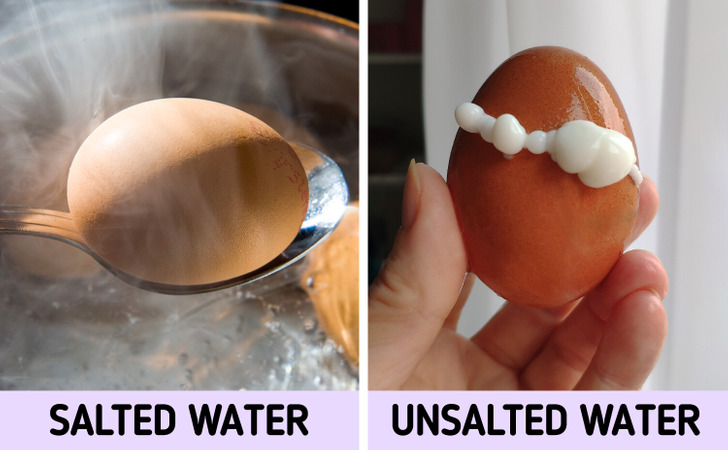
Eggs are some of the most popular foods for breakfast, but they are usually quickly boiled, even though this process can be improved with a simple trick. Add salt to the water before boiling. Thanks to the salt, the egg white will remain inside the shell even if it breaks. Salty water helps the egg white coagulate faster.
Don’t wash mushrooms.
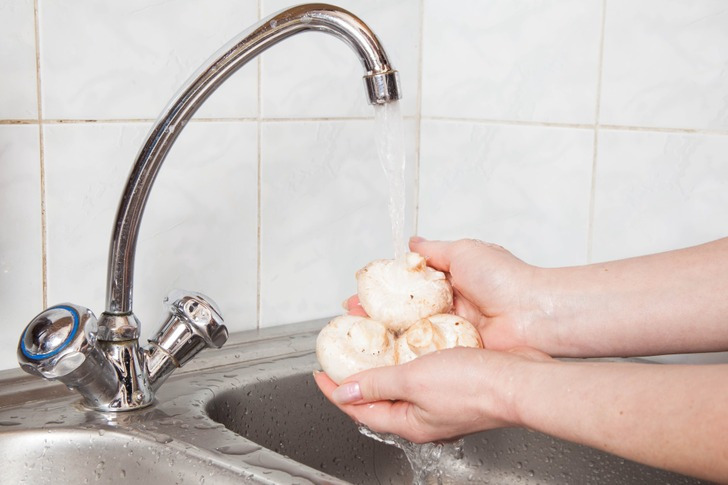
Few people know that mushrooms shouldn’t be washed before cooking. They will fall apart and lose their taste if too much water gets on them. It’s better to cook them right away if no chunks of soil are on them. You can remove any dirt with a dry towel. Tip: You can just cut off the chunks of dirt.
Soak potatoes.
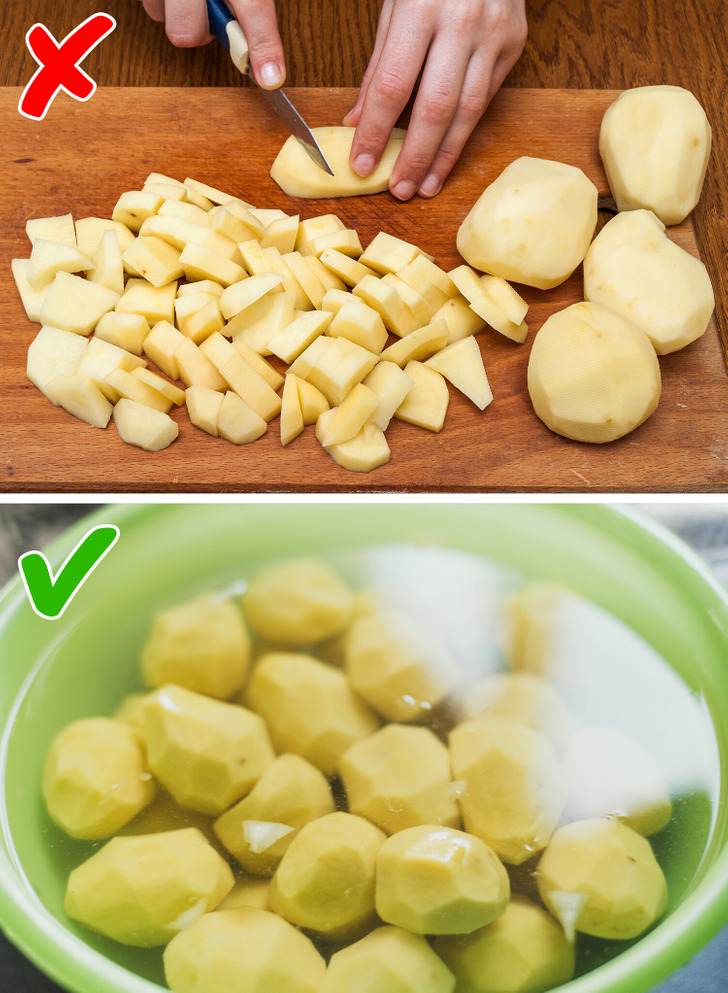
Soaking potatoes in water helps remove the excess starch and make them more dietary. Also, the excess starch may create a sticky film outside. Leave potatoes in cold water for several hours, and you will notice that the water becomes dark at the bottom. From time to time, you can change the water to remove the starch that might stay on the potatoes.
Wash vegetables in cold water after blanching.
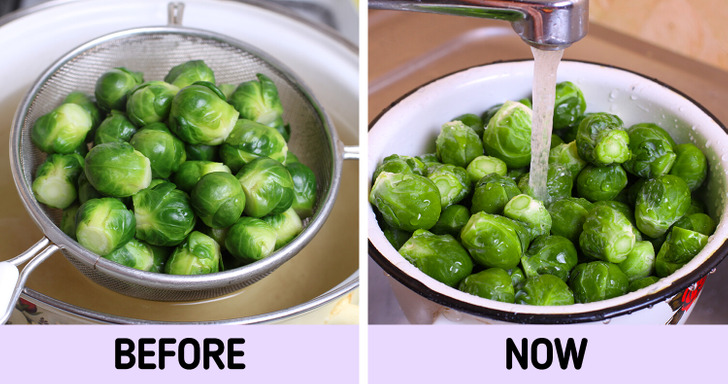
We often leave blanched vegetables hot, waiting for their turn to be used in a recipe. But in order to keep the taste bright and the texture crunchy, you can wash them in cold water or even put them on ice. If you don’t do it, the thermal processes won’t stop and neither will the cooking.
Don’t salt omelets at the start of cooking.
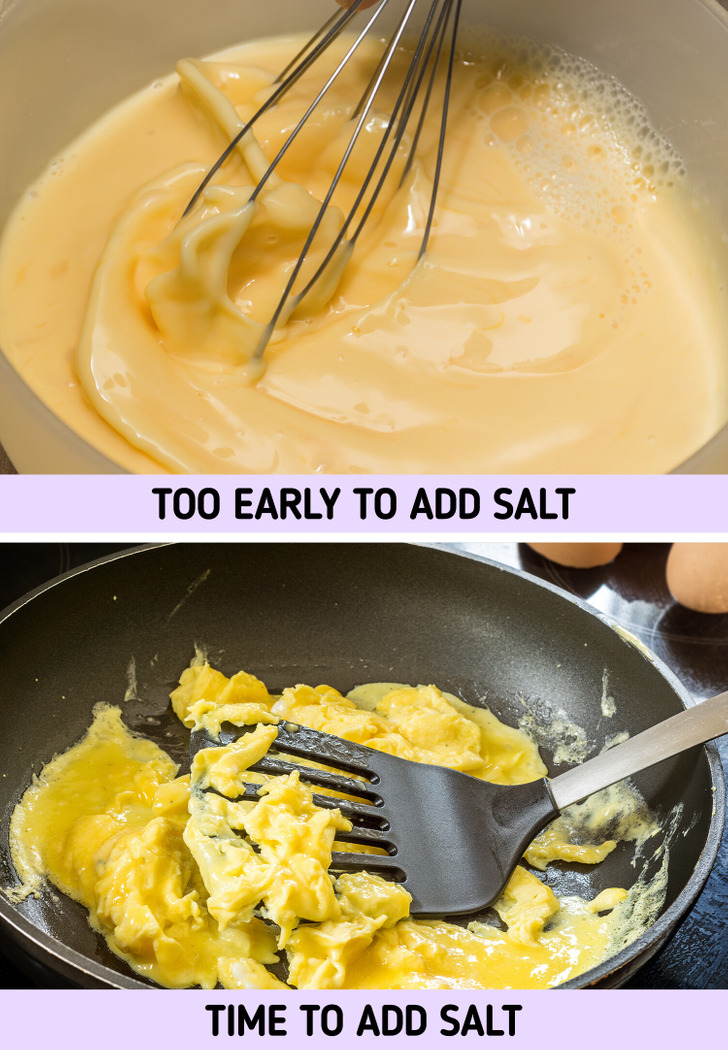
https://depositphotos.com/475445410/stock-photo-making-an-omelet-for-breakfast.html
https://depositphotos.com/71336517/stock-photo-frying-scrambled-eggs-in-a.html
Salting eggs at the start of cooking is a mistake that destroys the egg structure and makes them watery. It’s better to add salt at the end of cooking, according to Gordon Ramsay. He thinks that this is the most important part of cooking the best eggs.
Wash nuts.
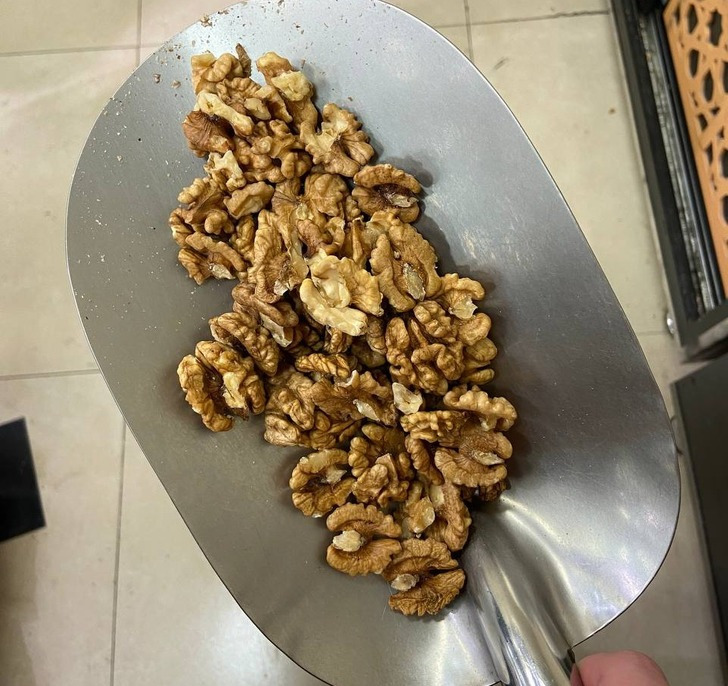
Dried fruit and nuts should be washed and even soaked in some cases. It would help if you did it with the nuts in the shells. They are often stored in bags and then put into individual packages. There, nuts and dried fruit are sprinkled with special chemicals that prevent the appearance of mold.
Salt the coffee.
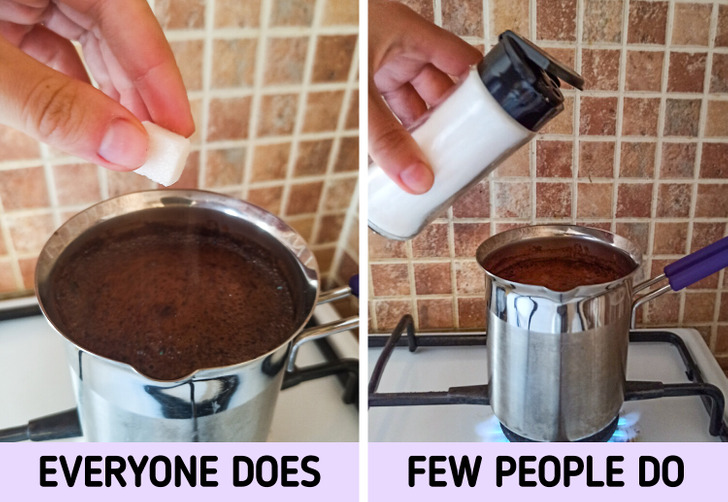
Even though adding salt to coffee is a popular tradition in many countries, it might seem like something exotic. But salt doesn’t only give coffee new tastes, but can also save coffee if it’s too bitter.
In 2009, the food science expert Alton Brown suggested adding salt in an episode of his cooking show Good Eats. He said that salt neutralized bitterness better than sugar and also smooths out the stale taste of water. According to Brown, you should add half a teaspoon of salt to each cup of water and 2 tsp coffee.
Proper slicing of onions.
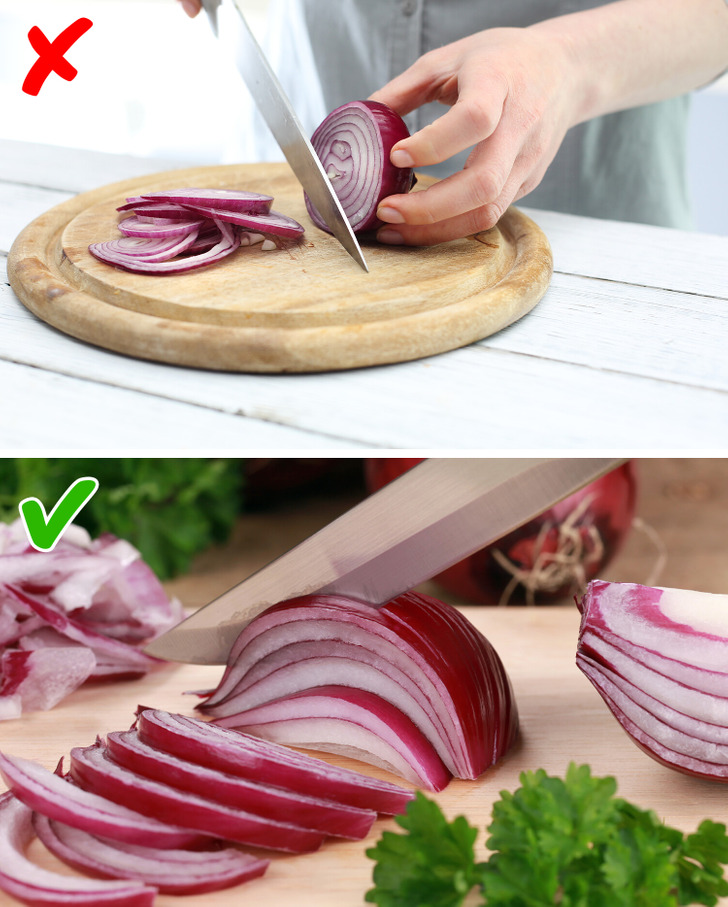
Do you get teary-eyed just thinking about slicing onions? This happens when we cut it into slices, thus breaking its cells, and causing it to release gases that, when combined with tears, cause burning eyes.
Fortunately, there is a solution to this: slice it with a sharp knife following the direction of the onion’s fibers. That’s the stripes that run from the root to the stem. The ideal is to cut it into strips (julienne). This will guarantee less production of irritating aerosols.
Don’t stirring fresh-made rice.
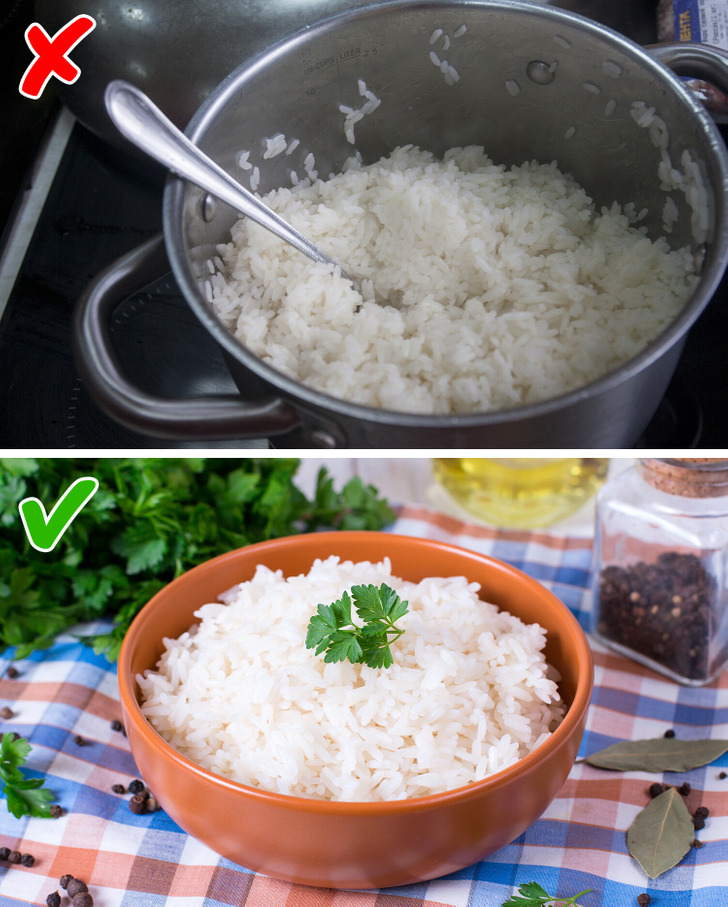
Sometimes less is more. Well, to see how it is or even to taste it, some people make the mistake of stirring the rice but the only thing they achieve is to leave it even wetter. This is because the simple fact of stirring the rice releases starch, and also the grain breaks.
So, to keep it loose, you should avoid stirring it while cooking. On the other hand, you should use the right amount of water — generally one cup of water for every 1/2 cup rice, depending on the type of grain — and wait for the cooking time without stirring it, that is, an average of 15 to 25 minutes for white rice, and about 45 minutes for brown rice.
Add cinnamon to more than just sweets.
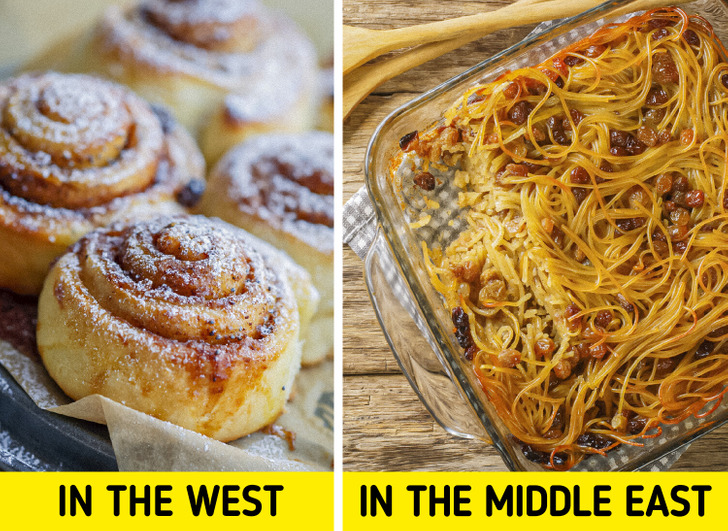
Cinnamon is one of the most popular spices in the world. Thanks to its sweet aroma, it goes well with many desserts. Of course, this spice is an essential part of Middle Eastern cuisine as well. But local chefs add it to meat dishes, cereals, and snacks. The Syrian spaghetti recipe includes cinnamon and tomato sauce.
What culinary tricks that few people know about would you like to share?
